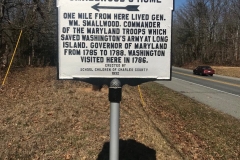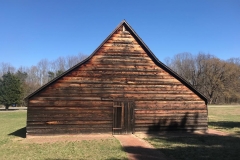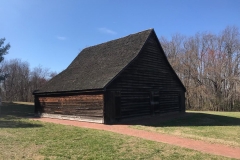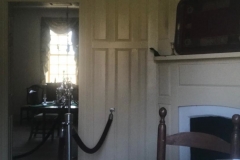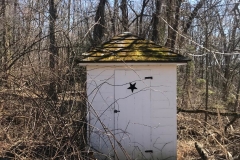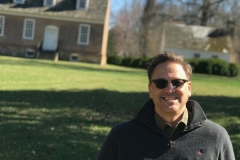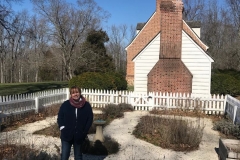Built around 1760, the Smallwood Retreat House, originally known as Mattawoman Plantation, was the home of American Revolutionary War General William Smallwood until his death in 1792. Michelle and I visited in March 2018.
Early this morning, I was updating the Lovelace section of my website when I discovered a branch of the tree I had not yet run across. It was also exciting to realize that the home of a very interesting member of that family, William Smallwood, was still standing and was less than an hour away.
A spur-of-the-moment road trip was in order.

Charles Wilson Peale painted his museum portrait of William Smallwood in the early 1780s. In the painting Smallwood wears his uniform of major general (the rank he received in recognition for his service at the Battle of Camden). Peale considered this portrait among his best works of that day, and nearly 40 years later remarked that the portrait is a faithful and expressive likeness of Smallwood.
First Cousin, Eight Times Removed
First, a bit about William Smallwood (1732 in Charles County, Maryland to 1792 in Charles County, Maryland) who turned out to be my first cousin, eight times removed. This is how:
My maternal grandfather was Guy Lovelace, the son of Jim Lovelace, the son of Charlie B. Lovelace, the son of Thomas A. Lovelace, the son of Thomas Lovelace, the son of Sarah Robey Lovelace, the daughter of Sarah Smallwood Robey, the daughter of Thomas Smallwood, the son of James Smallwood, who was my 8th great-grandfather. Another of James’ sons, in addition to Thomas, was Bayne Smallwood. Bayne was the father of William Smallwood, making William my first cousin, eight times removed.
Like my ancestors in the Lovelace and Robey familes, the Smallwoods were among the earliest settlers of Charles County, Maryland, located in Maryland’s rolling Potomac River country.
William Smallwood
William Smallwood was sent to England to be educated and graduated from Eaton. When he returned to America, he fought in the French and Indian War then served in various political positions in Maryland government. During the Revolutionary War, he quickly distinguished himself in a variety of battles. It has been noted that among his greatest service in the war were his skills as a drill master, in raising men and supplies and in administering military affairs of his state. He fought valiantly in several key battles, eventually receiving the rank of major general of the Continental army. George Washington himself even credited Smallwood with saving his Army during the Battle of Brooklyn.
After Washington’s troops were caught between land and water attacks in a British-laid trap on Long Island, their rescue came only because Smallwood and his men created a safe opening for them to retreat to safety. Washington and Smallwood remained friends for the rest of their lives.
In 1785, Smallwood was elected to congress and appointed Governor of Maryland. He never married and died in debt in 1792. His home, Smallwood Retreat House, was sold to pay his bills.
Smallwood was buried on his property and more than 100 years after his death, on July 4, 1898, the Sons of the American Revolution erected a granite marker on his unmarked grave.
Smallwood Retreat House

Photo: Thomas T. Waterman
Smallwood Retreat House before the restoration in the mid-1950s
Eventually, Smallwood Retreat House fell into disrepair and was in danger of being flattened and forgotten. However, in 1934, a group from the community of Charles County formed the Smallwood Foundation and began raising money to save the house. World War II put their plans on hold, but the restoration was begun in 1954 and completed in 1958. The period furnishings in the house correspond to those listed in the inventory for the property housed at the Maryland Archives.

Early photo of the restored Smallwood Retreat House in the Baltimore Sun, June 30, 1958.
Today, Smallwood State Park includes 984 acres and features a marina, boat ramps, picnicking facilities, campsites, cabins, trails, and a nature center.
If you visit between May and September on Sundays from 1 to 4 p.m., when the house is open, you can actually tour the inside of the house. If you’re looking for an even more Colonial experience, cooking demonstrations are held the second Sunday of each month.
Of course, you can also do what we did; tour the outside and peak in William Smallwood’s windows. You can find more details about the house here.
You can find out more about the Lovelace Family on their page of my website, my other family lines at HaywoodCountyLine.com, or read more blogs posts about the history of West Tennessee on my blog page.
Sources:
Archives of Maryland, William Smallwood
Smallwood State Park
Early Colonial Settlers of Southern Maryland
The National Cyclopedia of American Biography

